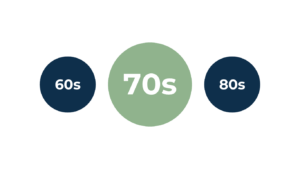
Milestone Ages – 55
Age Based PlanningOct 16, 2024
You turned 50, blinked, and now you’re 55. Another reminder that retirement is getting closer and another age that presents some options to you regarding your retirement assets. We are not advocating for you to take advantage of these options. In fact, we would recommend in most cases not to utilize them. We are simply letting you know the options that are available to you.
The first option that becomes available in the year you turn 55 is the ability to access your funds in your employer plan without penalty if your employment ends before turning 59 ½. Simply put, if you leave your employer for any reason during or after the year you turn 55, but before you turn 59 ½, you are able to access your funds from the employer plan without incurring a 10% penalty. You are still responsible for the taxes associated with the withdrawals. They never go away. It is also worth noting that this does not apply to IRA assets or other employer plans. It only applies to the plan associated with the employer that you leave in the year you turn 55 or later. Furthermore, the funds have to stay in that employer plan to avoid the penalty. If you roll the funds over, then you would incur penalties on any subsequent withdrawals before 59 ½.
The second option can get very complicated. You don’t technically need to be 55 to take advantage of it, but it is a common age for people to consider it. Substantially Equal Periodic Payments or 72(t) payments are a series of payments for a stated period of time. The time period has to be the longer of 5 years or until you turn 59 ½. For example, if you start them at 53, then they would have to continue until at least age 59 ½. If you start them at 55, they would have to continue for 5 years, which would take your commitment past 59 ½. There are calculation methods that need to be followed to determine the payment amounts and the penalty can be significant if you don’t follow through on the plan. For example, if you start it at 53 and need to withdraw a different amount at age 58, you will owe the 10% penalty on all of the withdrawals from age 53-58 and on any subsequent withdrawals until you turn 59 ½.
These rules can get fairly complex. If you are considering either of these options, we strongly encourage you to consult with a professional. It can be a perfect opportunity to start a relationship with a financial advisor and get a plan in place. It is worthwhile for you to make sure that you are utilizing your assets in an efficient manner and more importantly, not giving them up to unnecessary penalties.


